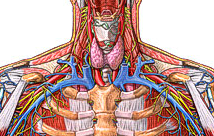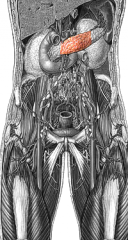![]()
![]()
![]()
Use LEFT and RIGHT arrow keys to navigate between flashcards;
Use UP and DOWN arrow keys to flip the card;
H to show hint;
A reads text to speech;
10 Cards in this Set
- Front
- Back

|
HYPOTHALAMUS |
|

|
ADENOHYPOPHYIS
ANTERIOR PITUITARY |
|

|
NUEROHYPOPHYSIS
POSTERIOR PITUITARY |
|

|
THYROID |
|

|
THYROID |
|

|
PANCREAS |
|

|
ADRENAL GLAND |
|
|
EXOCRINE GLAND |
Glands that have ducts are called exocrine glands. The secretions of exocrine glands reach their target by traveling through a duct (tube). Exocrine glands are not part of the endocrine system. Some examples of exocrine glands are sweat glands and salivary glands. |
|
|
ENDOCRINE GLAND |
The endocrine system is composed of ductless glands (glands that do not have tubes). Endocrine glands secrete hormones, which are chemical "messengers" that travel through the blood to regulate the activity of a target organ.Endocrine responses are slow because hormones must travel through the blood to reach their target organ(s). Also, the duration of the response is long because the hormone must be filtered out of the blood by the kidneys. Hormones often have multiple targets; as a result, their effects in the body are widespread. |
|
|
HORMONE |
CHEMICAL MESSANGER |

